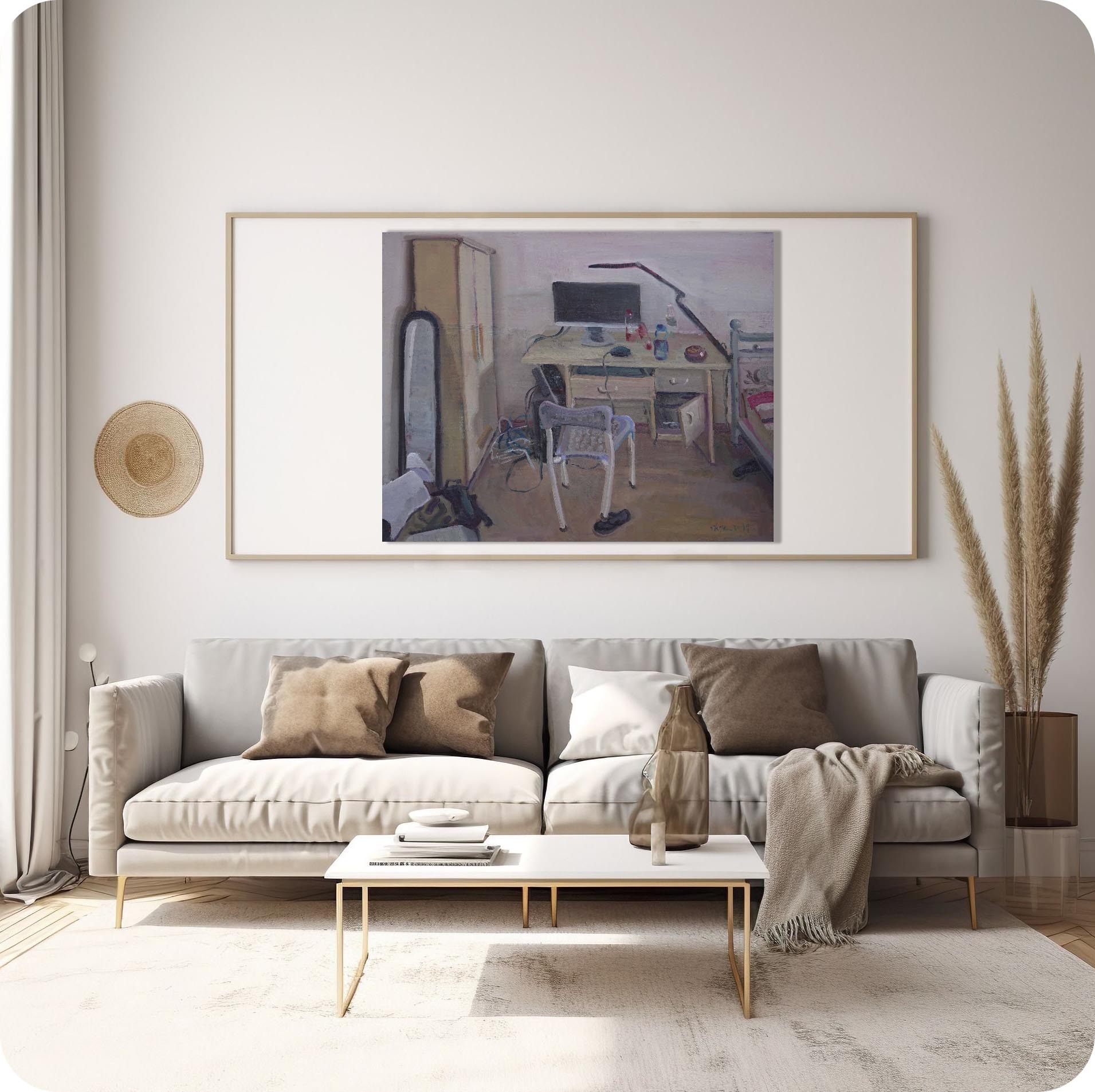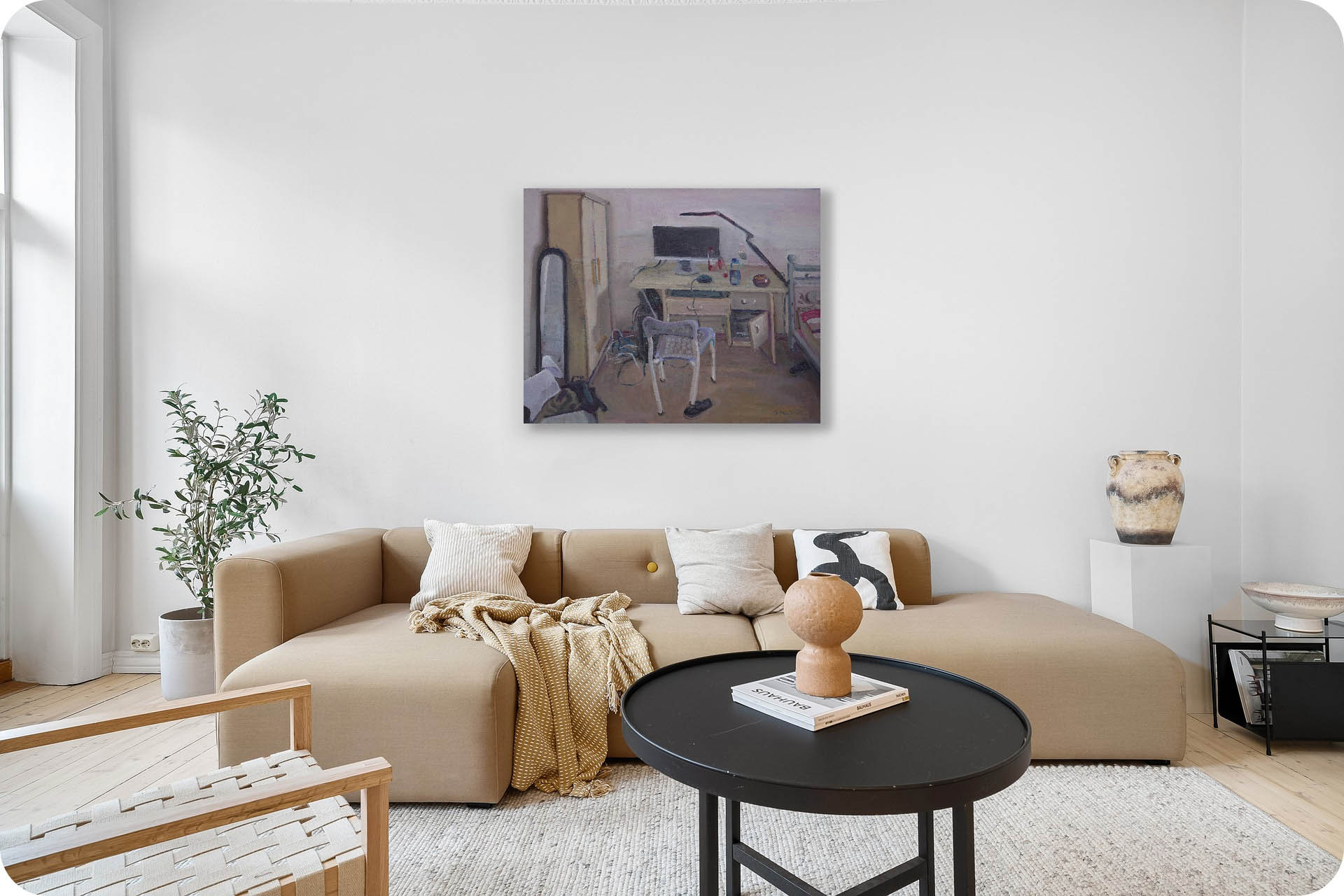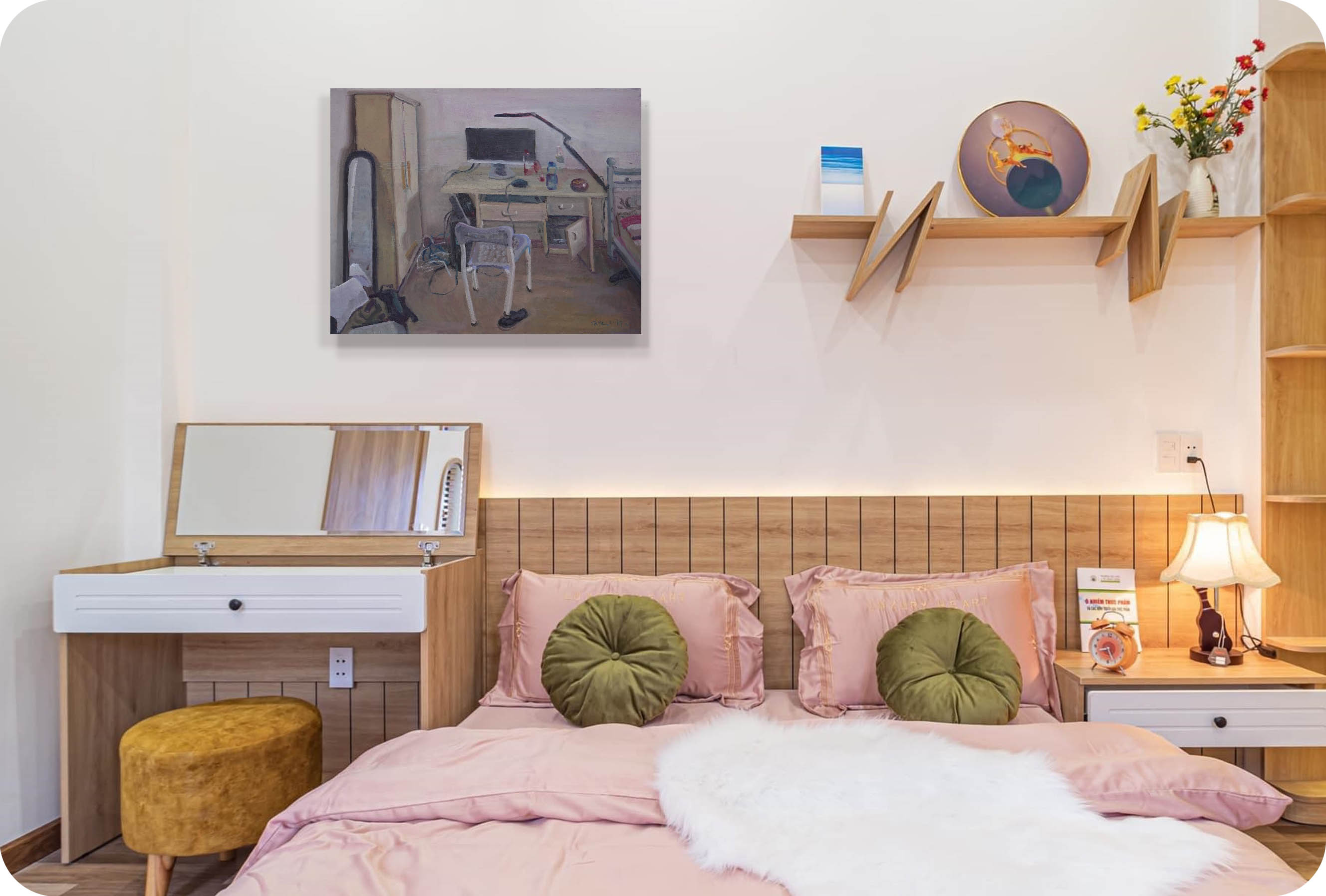This painting was created in 2019. This year is the third year of college. I started to prepare for my graduation work, so I tried paintings with more concepts, depth and formal unity. In these paintings, you Being able to begin to see a more specific me. Such attempts did add weight to the work, but it was only a small step compared to the depth that would later come with the weight of life. Then came the COVID-19 epidemic at the end of the year, and the future that people expected changed its face, either urgently or slowly.
A period of time, a life scene, a space. We are all used to storing something inside.
Inches: x in
Size without the frame: x cm
Country: China
Date: 2019
Materials: Oil paint on linen
Condition: well preserved
Creative themes and style | My works revolve around the creative concept of "The land of humanity, People on the land". The people in the painting are people in nature, and the lines, shapes, and colors are close to nature. The nature in the painting is nature in the eyes of humans, existing in interaction with humans.I don’t pursue a series of works with a fixed and continuous style. I hope that the style of the pictures will synchronize with the changes in my life and always remain oscillating. The performance of the work must be in sync with the development of one's own life in order to be Sincere and powerful. Ideas are later.
If you would like to collect this artwork or know more about the artist, please contact us.



Compositionally, the scattered objects imply a sense of order. Elements such as a wardrobe, desk, and chair enclose a living space, similar to the layout logic of Hopper's lonely interiors, yet eschewing the sense of alienation and incorporating a sense of everyday life. The irregular placement of objects guides the eye, revealing layers within the seemingly ordinary.
The palette of soft grays, with pale pink walls and wooden furniture, creates a tranquil, hazy atmosphere, reminiscent of Vuillard's gentle capture of interior light and color, yet with a more restrained touch. The missing "pink cloud" shifts the image from vibrant to austere, creating an emotional void, much like the emotional expression of color in Munch's "The Scream," where it is withdrawn and transformed into a restrained melancholy.
The brushwork is both relaxed and delicate, capturing the folds of clothing and the texture of the tabletop with varying thicknesses of paint. This expression evokes the casual touch of Bonnard's depictions of the everyday, yet incorporates the simplicity of a contemporary perspective. His flowing brushstrokes transform ordinary objects into emotional vehicles, capturing the essence of life without forced realism.
The content and theme revolve around the concept of absence. The departure of the "Pink Cloud" renders a familiar space unfamiliar. Tangled wires and half-open drawers are remnants of everyday routine, while the absence of vibrant color, like the covered images in Richter's paintings, suggests a quiet withdrawal of life's poetry, exploring the relationship between the everyday and loss, existence and disappearance.
Emotional expression is hidden in the subdued tones and vacant spaces. The soft background evokes a lingering warmth, while the departure of the "Pink Cloud" is a sigh of poetic dissipation. Like Kitaj's intimate account of personal memory, the viewer, within this familiar scene, encounters the loss and subtle melancholy of disappearance hidden within the mundane, creating a delicate empathy about the concept of "departure."
A1: The setting remains the same room, yet the fantastical symbol has vanished. Scattered bottles on the table, an open drawer, and a tilted chair suggest traces of departure. It feels as though the ordinary has returned to the ordinary, but with a lingering sense of emptiness.
A2: The palette leans toward muted grays, purples, and faded pinks, lacking the bright intensity of the previous piece. This restraint enhances the “sense of absence,” evoking the atmosphere of a room after a dream has dissolved—calm, yet slightly desolate.
A3: Compared with the earlier piece, this painting emphasizes “traces” and “disappearance,” allowing viewers to sense the afterglow of something surreal within realistic domestic details. It is particularly suited for paired or series collections, making it valuable for collectors and curators interested in how contemporary painting intertwines the surreal with everyday narrative.
A4: These details evoke states of “incompletion” or “interruption,” as if an action was suddenly cut short. In connection with the absence of the “pink cloud,” they create a lingering tension, leaving behind a residue of unresolved mystery.
A5: If the earlier painting embodied “fantasy suddenly intruding upon reality,” then this piece conveys “the silence after fantasy departs.” One reveals, the other conceals; one affirms presence, the other underscores absence. Together, they form a subtle diptych narrative where both states—existence and loss—carry equal weight.
A: Click here to view ARTPHILOSO's Guide for Collectors.
More paintings from this series:
